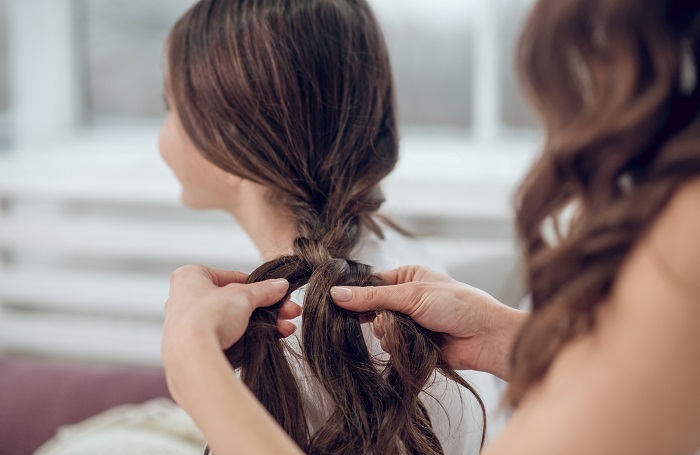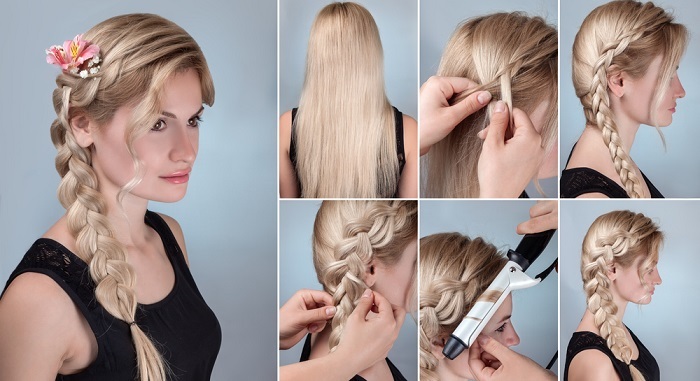

Braiding long hair can be a fun and creative way to style your locks. Braids can range from simple and understated to intricate and eye-catching, making them a versatile option for any occasion. Whether you're looking for a sleek and sophisticated braid for a formal event or a relaxed and bohemian braid for a summer festival, there's a braid for every occasion. With the right techniques and a bit of patience, anyone can learn to braid their long hair into a beautiful and unique style.

Braiding long hair has a rich and diverse history that dates back thousands of years. Braids have been used as a form of self-expression and a symbol of cultural identity throughout many cultures and civilizations.
In ancient times, braids were used as a functional way to keep long hair out of the face and away from dangerous or dirty environments. Braids also served as a symbol of status and power, with different braided styles signifying different social and economic ranks.
In African cultures, braids have a rich history as a form of self-expression, storytelling, and cultural identity. Braids were often used to convey important messages and tell stories, with different braided styles symbolizing different meanings and cultural values.
In Europe, braids have a long history as well, with braided hairstyles being used to signal different social and cultural statuses. During the Renaissance, braids became a popular way for women to show off their wealth and social status, with braids made from real gold and silver thread becoming a symbol of high society.
Today, braiding long hair remains a popular and versatile way to style and express oneself. Braids are no longer limited to a particular culture or society and can be seen on people of all ages, genders, and backgrounds. Whether you're braiding your hair for practicality, style, or self-expression, braids continue to be a timeless and beautiful way to show off your unique and personal sense of style.
There are several reasons why people choose to braid their long hair −
Braids can be a convenient way to keep long hair out of the face, especially during activities like exercising, cooking, or playing sports.
Braiding can protect the hair from damage caused by daily wear and tear, such as heat styling, tangling, and breakage.
Braids can be a stylish and fashionable way to wear long hair, allowing people to create unique and intricate hairstyles that showcase their personal sense of style.
Braiding hair has cultural significance in many communities, including African, Native American, and African American cultures, where braided hairstyles are often worn as a symbol of pride and cultural identity.
Braids can be low-maintenance and easy to care for, making them a popular choice for people who are looking for a hairstyle that requires minimal styling and upkeep.
Braids can be styled in many different ways, from simple and straightforward to elaborate and intricate. This versatility makes braids a popular choice for people who want to switch up their hairstyle from time to time.
Regardless of the reason, braids are a popular and versatile hairstyle that offer many benefits for people with long hair.
Here is a basic guide for braiding long hair −
Start with clean, detangled hair. If your hair is particularly knotty or frizzy, you may want to apply some leave-in conditioner to make braiding easier.
Divide your hair into three equal sections. Make sure the sections are neat and not too thick, as this will make braiding more difficult.
Cross the right section over the middle section, then cross the left section over the new middle section.
Repeat this process, bringing the right section over the new middle section, then the left section over the new middle section. As you braid, be sure to keep the sections tight and close to your head.
Continue braiding until you reach the end of your hair. If you're braiding your own hair, you may need to use a mirror to ensure that the braid is even and smooth.
Secure the end of the braid with an elastic band or hair tie. You can also add some hair spray or pomade to help keep the braid in place and prevent flyaway.

This is a basic guide for braiding long hair, and there are many variations on this technique that can be used to create different styles, such as the French braid, the Dutch braid, the fishtail braid, and others. With practice and patience, you can master braiding your long hair into a wide range of beautiful and unique styles.
Braiding hair has strong cultural and religious connections in many countries around the world. Here are a few examples −
Braided hairstyles are deeply rooted in African culture and have been worn for centuries. Braids serve as a symbol of cultural identity and social status and are often used to tell a story about a person's background or history.
Braids have been an important part of Native American culture for centuries. Braids symbolize strength and unity and are often worn as a tribute to one's heritage and cultural roots.
In Hindu culture, braids are often worn by women as a symbol of married status. In some communities, braids are also used to show respect for elders and the traditions of the culture.
Braided hairstyles have been worn by women in the Middle East for centuries. In some Islamic communities, braids are worn as a sign of modesty and to show respect for religious and cultural traditions.
Braids have been a key part of the Rastafarian culture since its inception in Jamaica. Braids are seen as a symbol of freedom, strength, and resistance to oppression.
These are just a few examples of the many cultures around the world where braiding holds significant cultural and religious significance. Regardless of the culture or religion, braids have long been used to symbolize identity, heritage, and cultural pride.
In conclusion, braiding hair is a versatile and ancient art form that has played a significant role in many cultures and religious traditions around the world. Braids serve as a symbol of cultural identity, social status, and personal style and can be a convenient, protective, and low-maintenance way to wear long hair. Whether worn for fashion, cultural significance, or practical reasons, braids are a timeless and enduring hairstyle that will likely continue to be popular for many years to come.